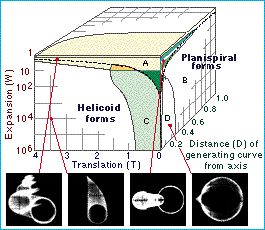Adaptive explanation - Is perfect adaptation possible?

Developmental constraints
A discussion of developmental constraints by John Maynard Smith gave the following definition:
'a developmental constraint is a bias on the production of variant phenotypes or a limitation on phenotypic variablilty caused by the structure, character, composition, or dynamics of the developmental system'
The idea is that different groups of living things have developed different developmental mechanisms, and that the way an organism develops will influence the kinds of mutation it is likely to generate. A plant, for example, may be more likely to mutate to a new form with more branches than would a vertebrate (in the vertebrate, new 'branches' might be extra legs, or perhaps having two heads), because it is easier to produce that kind of change in the development of a plant.
The relationship between constraints and selection can be explored with the concept of a morphospace (opposite). Raup found that the shell shapes can be described with three variables and so any shell can be represented as a point in a three dimensional space. He found that large parts of the morphospace are not occupied by any living shells: either natural selection or constraint (perhaps developmental) is responsible for the empty regions.
The philosopher of science Daniel Dennett explains the importance of developmental constraints in determining an organism's structure.
Figure: a morphospace. The three dimensional cube describes a set of possible shell shapes. The four possible shell shapes are illustrated: they were drawn by a computer. Only four regions in the cube (marked A, B, C, and D) are actually occupied by natural species: the other regions are theoretically possible but naturally unrealized shapes. From Raup (1966).
| Next |



